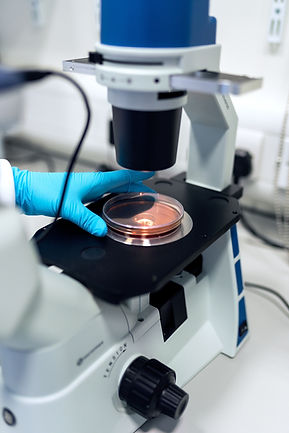
In-Vitro Fertilization
What is ivf?
IVF is the process of harvesting unfertilized oocytes directly from the ovaries of a donor cow or heifer. These recovered oocytes are then fertilized with semen in a petri dish one day after aspiration and develop in an incubator to become embryos 7 days after fertilization.
Oocytes are first collected from the ovaries by ultrasound-guided follicular aspiration. The oocytes are then matured for 24 hours and then fertilized in a petri dish. After fertilzation the embryos are incubated for 7 days during which embryonic development takes place. After the 7 days the resulting viable embryos are then transferred into recipients or frozen.
*Our IVF lab is now in house


IVF Process
Select
donor
Donor on
protocol
oocytes collected
oocytes fertilized
Implant
Select your donor female
Donor DFR and super stimulation
Oocytes are aspirated from the donors ovaries
Oocytes are fertilized in a petri-dish and incubated for 7 days to become an embryo
Viable embryos are either freshly implanted into a recipient female or frozen

Why ivf?
There are several reasons which make IVF advantageous compared to conventional flushing including:
-
Potential to obtain embryos from donors that do not respond to conventional flushing.
-
Collection from donors can occur every two weeks.
-
Pregnant donors can be collected from up to 90-150 days pregnant.
-
Can collect heifers before or after breeding which allows breeders to accelerate genetic improvement.
-
Can use only one straw of semen on multiple donors.
-
How often can oocytes be collected?Oocytes can be collected every two weeks and this is one of the main advantages of IVF as cows can be collected more rapidly to improve genetic genes.
-
What results can be expected with each IVF?An average mature breed cow will give 18 oocytes which should translate into roughly 5 freezable quality embryos. Beef heifers will vary more in their oocyte numbers and embryo development rates. However, typically we will see 30-40% of oocytes develop into freezable quality embryos.
-
What donor females make good candidates for IVF?Similar to conventional embryo production highly fertile cows will still produce better in an IVF scenario. Donor selection criteria such as age, parity, fertile history and nutritional status are essential in choosing proper candidates for IVF. However, cow that do not perform well in a conventional flush should still perform well in an IVF.
-
How young can heifers be IVF'd?Heifers can be collected as early as 8 months, but for best results it is common to wait until they’ve had their own natural heat cycle prior to collection.
-
What are grade 2 IVF embryos?According to IETS grading standards a Grade 2 IVF embryo would have a similar classification to a Grade 1 (excellent) conventional embryo. Pregnancy rates between Grade 1 and Grade 2 IVF embryo are very similar.
